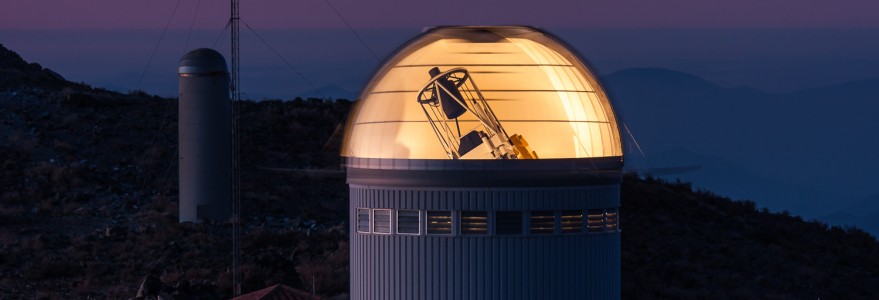The first extrasolar ice giant – a planet OGLE-2008-BLG-092Lb – is the latest discovery made by researchers from the University of Warsaw.
An international group of researchers led by Dr. Radosław Poleski, currently working at the Ohio State University (OSU), with major involvement of astronomers from the OGLE project held at the University of Warsaw Astronomical Observatory, announced a discovery of an extremely interesting extrasolar planetary system in a paper published in “The Astrophysical Journal”.
The discovery of a planet called OGLE-2008-BLG-092Lb may be a breakthrough in our knowledge of extrasolar planetary systems. Up do date, astronomers have discovered about two thousand extrasolar planets in our Galaxy. These are mostly gaseous giants such as our Jupiter, or rocky planets similar to Earth. But so far nobody discovered any planets resembling Uranus or Neptune – ice giants that constitute a distinct group of planets in our Solar System. This newly discovered planet is the first extrasolar object of this type – a twin of Uranus.
– The newly discovered planet is in a unique and extremely interesting system that consists of two stars forming a binary system. The planet orbits one of the stars, but the second star is close enough, that it may have noticeable influence on the orbit of the planet – says Dr. Radosław Poleski – the first author of the discovery publications and a member of the OGLE team.
The discovery of OGLE-2008-BLG-092Lb may help explain a mysterious location of Uranus and Neptune in our Solar System – these planets are on much larger orbits around the Sun than they should, according to models predicting that these planets should have formed much closer to the Sun.
– One idea is that they did form much closer, but were jostled around by Jupiter and Saturn and knocked farther out – says Professor Andrew Gould from the Ohio State University, a coauthor of the publication. – Maybe the existence of this Uranus-like planet is connected to interference from the second star. Maybe you need some kind of jostling to make planets like Uranus and Neptune – he continues.
The binary star system, OGLE-2008-BLG-092L, is located in the Milky Way in the direction of Sagittarius. The star orbited by the planet is 2/3 as massive as our Sun, while the other star is 1/6 as massive. The planet is four times more massive than Uranus, but orbits its star almost at the same distance as Uranus orbits the Sun.
Astronomers discovered this extrasolar planetary system thanks to a phenomenon called gravitational microlensing. This happens when the gravitational force of the star bends the light from a far away object and magnifies it like a lens. The OGLE project is currently discovering over 2000 microlensing events each year. A dozen or so of these are caused by extrasolar planetary systems.
In the case of the planet OGLE-2008-BLG-092Lb the microlensing event was discovered twice.
– In 2008, the microlensing event revealed one of the stars of this binary system and a probable planet – says Dr Jan Skowron, a member of the OGLE team and a coauthor of the publication.
– The second microlensing event that took place in 2010, was extremely surprising. We immediately realized that what we see is a unique configuration in which the planet orbits one star in a binary star system – adds Professor Andrzej Udalski, the leader of the OGLE project.
All observations were made with the 1.3-meter Warsaw Telescope located at Las Campanas Observatory in Chile.
Dr. Radosław Poleski, who led the analysis, combined information from the two microlensing events in 2008 and 2010, which allowed him to determine masses of both stars and the planet, as well as their relative distances. Such systems can be investigated only with the microlensing method. Orbits of Uranus and Neptune are very wide, which means that one revolution around the Sun takes several dozen years. This is why other methods of discovering extrasolar planets, such as the transit or the radial velocity method, are not capable of discovering this type of planets.
– Only microlensing can detect these cold ice giants that, like Uranus and Neptune, are far away from their host stars. The discovery of OGLE-2008-BLG-092Lb demonstrates that microlensing allows to explore new areas of extrasolar planetary systems – says Dr. Poleski.
– We were lucky to see the signal from the planet, its host star, and the companion star in the binary system. If the orientation of the system had been different, we would have seen only the planet, and we probably would have called it a free-floating planet (which does not orbit any star) – he adds.



